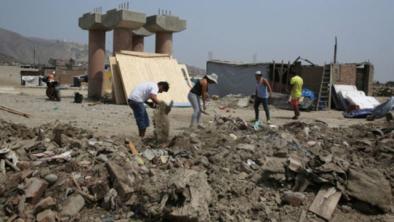Science Source
From drought to flooding: understanding the abrupt 2010–11 hydrological annual cycle in the Amazonas River and tributaries
In recent decades, several extreme hydrological events occurred in the Amazon region. Among them, two of the most severe droughts were reported during 2005 and 2010, which were harmful for agriculture, ecosystems and caused massive forest fires. In both cases, dry conditions were particularly intense in the western Amazon. Also, heavy floodings were reported in the central part of the Amazon basin in 1999 and 2009. An increase of the frequency of extreme hydrological events in the Amazon basin is thus observed since the end of the 1980s, which is coherent with the hypothesis that extreme droughts may become more frequent and intense because of a future climate change.
Study excerpt
- States that in recent decades, several extreme hydrological events occurred in the Amazon region, including two of the most severe droughts, reported during 2005 and 2010, which were harmful for agriculture, ecosystems and caused massive forest fires; dry conditions where particularly intense in the western Amazon
- Documents and analyzes the hydrological annual cycles characterized by a rapid transition between low and high flows in the Amazonas River (Peruvian Amazon) and we show how these events, which may impact vulnerable riverside residents, are related to regional climate variability
- Bases analysis on comprehensive discharge, rainfall and average suspended sediment data sets
- Pays particular attention to the 2010–11 hydrological year, when an unprecedented abrupt transition from the extreme September 2010 drought (8300 m3 s−1) to one of the four highest discharges in April 2011 (49 500 m3 s−1) was recorded at Tamshiyacu (Amazonas River)
- Finds that this unusual transition is also observed in average suspended sediments
- Finds that years with a rapid increase in discharge are characterized by negative sea surface temperature anomalies in the central equatorial Pacific during austral summer, corresponding to a La Niña-like mode
- Finds, however, that El Niño events can also produce dry conditions during the austral summer, especially in the northeast of the basin and exceptionally in the western Amazon (e.g. in 1998 and 2010)
- Finds that it originates a geopotential height wave train over the subtropical South Pacific and southeastern South America, with a negative anomaly along the southern Amazon and the southeastern South Atlantic convergence zone region
- Finds that, as a consequence, the monsoon flux is retained over the Amazon and a strong convergence of humidity occurs in the Peruvian Amazon basin, favoring high rainfall and discharge
- Concludes that these features are also reported during the 2010–11 austral summer, when an intense La Niña event characterized the equatorial Pacific
Related Content
Headline

Apr 19, 2017 | The Guardian via AFP
Death toll rises to 113 in Peru floods, mudslides
Headline

Apr 13, 2017 | the Guardian
How can Peru prepare to withstand more devastating floods and landslides?
Headline

Apr 9, 2017 | ReliefWeb
Heavy rains cause landslides, flooding in Colombia and Peru
Headline

Apr 7, 2017 | Inside Climate News
Peru's floods follow climate change's deadly trend


